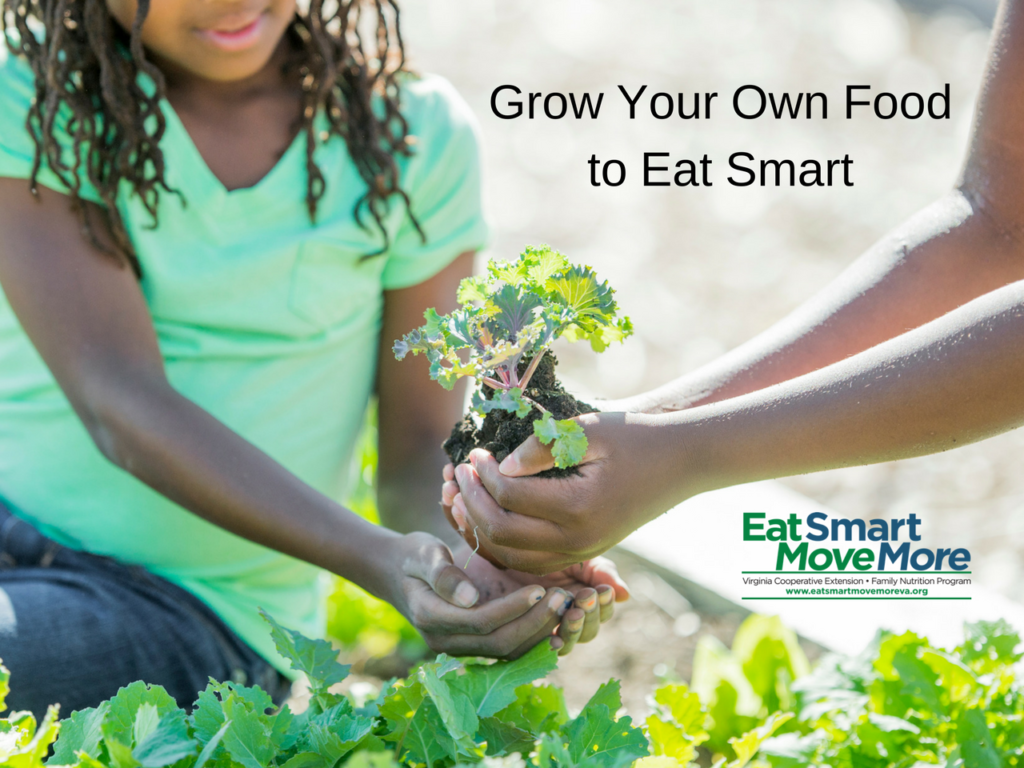We know that making half your plate fruits and vegetables is an important part of eating smart. But getting enough fresh produce can be tough when you’re on a budget or live far from a grocery store. Thankfully, with a little effort and a small investment, you can grow your own nutritious and delicious produce. A Master Gardener from Oregon pulled together an estimate of the net profit (price of food grown – cost of equipment, seeds, fertilizers, etc.) of a home garden. On average, she calculated the value of growing your own food to be $0.74 per square foot of garden space. To put that into more practical terms, a 10-foot x 10-foot garden will give you $74 of fresh produce. Even just a few containers of edible plants can provide more food than the cost of the investment.
And you may not realize it, but SNAP benefits can be used to purchase food-bearing seeds and seedlings (but not gardening supplies like pots, trowels, or soil). So for the price of 1 serving of your favorite veggie, you can grow an entire season’s worth. Not only does gardening pay for itself in healthy, fresh food, it can also:
- Make kids more likely to try new fruits and veggies. If they help grow it, they’re more excited to eat it!
- Improve your neighborhood, making it more inviting and attractive. Not only is your yard more beautiful, but you’ll be outside more often and have more opportunities to chat with your neighbors.
- Count towards your physical activity goals. Gardening is a moderate intensity physical activity!
- Inspire more creativity in the kitchen. If you’ve ever grown zucchini, you know that at the height of the season, you’ll be highly motivated to find new recipes!
- Encourage you to learn more about home food preservation (freezing, drying, or canning) to take advantage of all the fresh produce from the garden.

We’ve known since WWII that growing your own food is a great way to eat smart and save money.
Advice for getting started
- Start small. Stick with a few, easy-to-grow plants at first. Herbs (especially basil), leafy greens, summer squash or zucchini, and cucumbers tend to be easier to take care of and will produce a lot for new gardeners. The Master Gardener from Oregon recommends starting with peas, leaf lettuce, summer squash, tomatoes, spinach, potatoes, garlic. If you’re looking for a high return on investment, consider salad greens, tomatoes, beets, broccoli, potatoes, or strawberries.
- Plant in a pot. Container gardening is another great way to start small. It’s also a perfect solution for renters or for indoor spaces. This publication is an excellent overview of getting started with container gardening. And don’t worry, almost anything you would grow in the ground can work in a container!
- Plant what you eat. This seems obvious, but it’s easy to get distracted by the amazing variety of seeds and seedlings you could plant. But you’re only saving money if you actually eat what you grow! So if you’re not a big fan of beets, then you should skip planting them. (Although I have no idea why you wouldn’t love beets. ☺️) Here’s a helpful list of veggies that grow best in Virginia.
- Ask for help. Gardening is the miracle of life on a 4-month scale. As simple as it seems (doesn’t grass grow just fine without any help from us?), you might face some challenges in getting from a tiny seed to a veggie on your plate. Contact your local extension office to find out about gardening programs or to ask questions to gardening experts. You might also have neighbors, relatives, or friends with gardening experience that can help you out as well. Here’s a guide that will help you get started planning a vegetable garden.
Gardening is a great way to connect with where your food comes from. You’ll gain an appreciation for farmers who grow the food we buy from the store or at the local farmers market. You and your family will also develop a taste for fresh from the vine produce and become more creative cooks. Gardening also helps stretch your food budget further.

